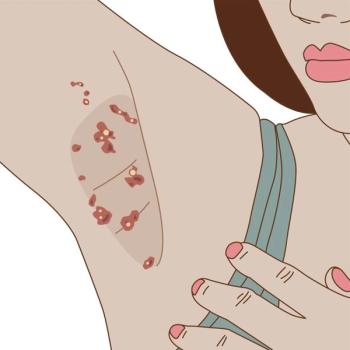
AOSSM: Arthroscopic Surgery Aces Tennis Elbow in Small Study
CALGARY, Alberta -- For refractory lateral epicondylitis, arthroscopic release surgery has been shown in 130-month results of a 30-patient study to get a majority of tennis players back on the court.
CALGARY, Alberta, July 16 -- For refractory lateral epicondylitis, arthroscopic release surgery has been shown in 130-month results of a 30-patient study to get a majority of tennis players back on the court.
Patients had virtually no pain at rest, and three-fourths said they had much better elbow function as measured by a validation scale, reported, Champ L. Baker Jr., M.D. and Champ L. Baker III M.D. at the American Orthopaedic Society for Sports Medicine meeting here.
"This is the first longitudinal study of arthroscopic treatment of tennis elbow," said the younger Dr. Baker, an orthopedic resident at the University of Pittsburgh. "The initial success from our original short-term study was maintained long term. I am happy to say that arthroscopic release is a good treatment option for lingering tennis elbow."
But an orthopedic surgeon who was not involved in the study said that surgery for lateral epicondyitis is a last resort, reserved only for the most recalcitrant cases, and that when surgery is called for, open procedures are more often used.
"Very few people do the arthroscopic release," said Paul Weitzel, M.D., of New England Baptist Hospital in Boston, in an interview. "The disease process is that a tendon to the extensor carpi radialis brevis slowly detaches itself from the bone, and granulation tissue forms in its place. So the non-surgical treatment is to decrease the inflammation in that area and re-strengthen the surrounding structures, allowing the scar tissue to mature and therefore be non-painful."
Other non-surgical options include cortisone injections, as well as physical therapy to stretch the muscles and reduce pain. Only those cases that don't respond after many months or years of treatment and multiple non-surgical options would then be referred for surgery, Dr. Weitzel said.
Drs. Baker reported on a mean 130-month follow-up of 30 patients who had been treated with arthroscopic release,
The patients included 19 men and 11 women, with a mean age at the time of surgery of 43. In 21 patients (70%), the elbow of the dominant extremity was involved.
At 10 years-plus, the patients were asked to rate their current level of pain on a visual analog scale, with 0 equal to no pain, and 10 being the worst imaginable. The patients were also asked to rate elbow function according to the functional scale of the Mayo Clinic Elbow Performance Index, and were asked whether their elbows were "much better," "better," "the same," or "worse."
The authors found that at the mean 130 month follow-up, the average reported pain score at rest was 0, the average score with activities of daily living was 1.0 (range 0-5), and the score with work or sports was 1.9 (range, 0-9).
The average score on the functional portion of the Mayo scale was 11.66 out of a possible 12 points (range, 8.75-12), indicating that patients rated their elbows as highly functional.
No patient had required either additional or repeat anti-inflammatory injections after surgery, the authors reported, although one patient continued to wear a counterforce brace for heavy lifting.
On the functional scale, 23 of the 30 patients (77%) said that they were "much better," six (20%) stated they were "better," and one (3%) said that he was the same; no patients reported doing worse.
Twenty-six patients (87%) said that they were satisfied with the outcome, and 28 (93%) said they would have the surgery again if needed.
But even so, Dr. Weitzel said, very few patients are likely to need the procedure.
"I don't scope elbows anymore, although I did as a resident and a fellow, but I've never 'scoped an elbow since I've been in practice," he said. "Of my tennis-elbow cases, I'd say that fewer than 5% end up needing surgery, although some do, and surgery works."
Newsletter
Enhance your clinical practice with the Patient Care newsletter, offering the latest evidence-based guidelines, diagnostic insights, and treatment strategies for primary care physicians.















































































































































































































































































